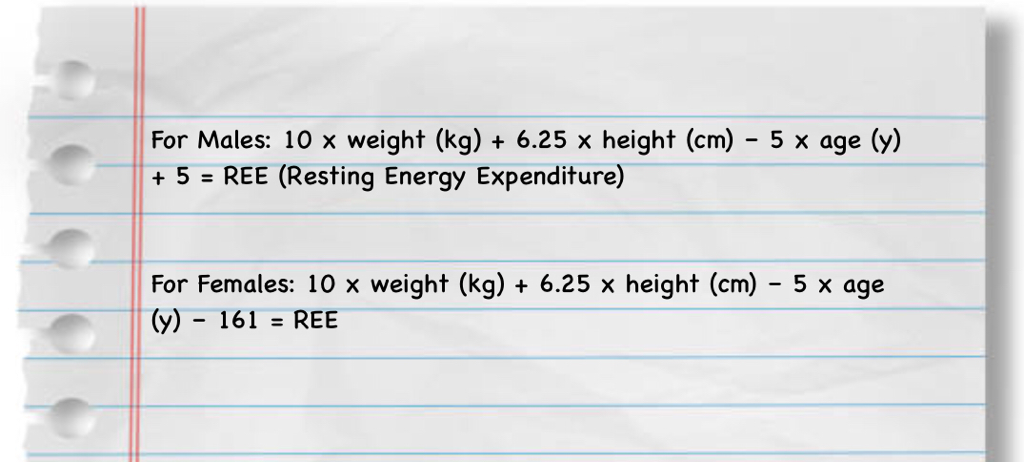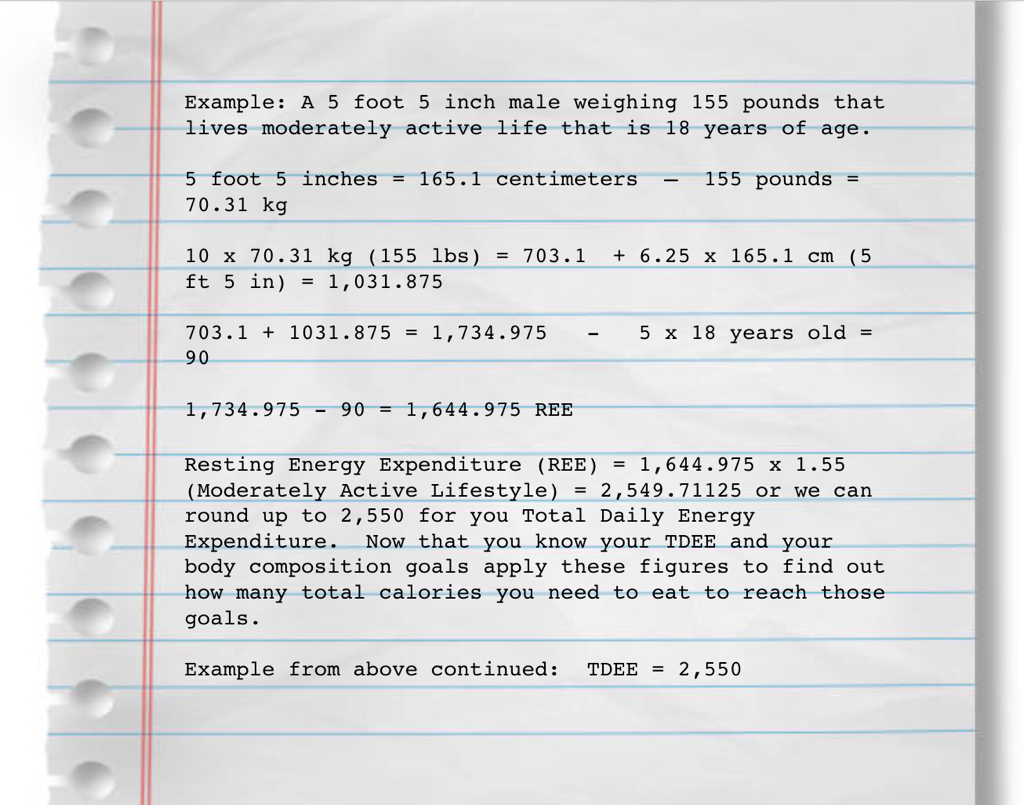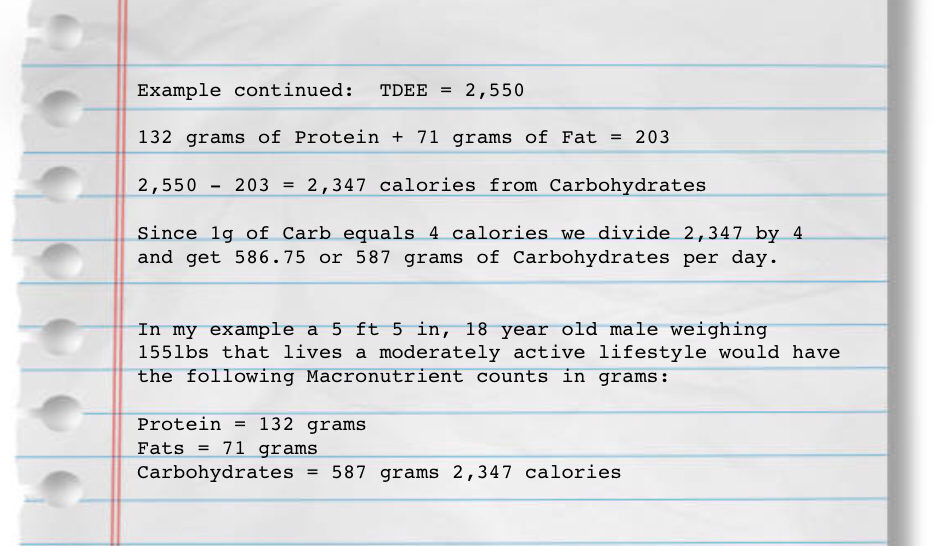First, let’s define what macronutrients are. Macronutrients are substances that provide energy that the body needs for growth. The main categories are: fat, carbohydrates, and protein.
Now, why are they important? And why do we need to calculate them?
Macronutrients are the essential nutrients that provide our bodies with energy to metabolize food, repair cell and tissue damage, allow it to grow and maintain other bodily functions. Calculating your macronutrients and calories can help you attain your body composition goals. Everyone has different body composition goals. Some people have goals to gain weight and add muscle, some would like to lose weight especially body fat and some would just like to maintain their current body composition. Whatever your body composition goal maybe, there is a way to figure out how many calories from proteins, fats and carbohydrates you should eat in a day depending on your daily energy expenditure of calories. When the amount of proteins, carbohydrates and fats that you need in a day are calculated for you, you can then develop meal plans for your day that fit your lifestyle and your body composition goals.
Finding your macronutrient count.
There are different ways to calculate your personal macronutrient count for the day:
The 1st step is to find your Total Daily Energy Expenditure (TDEE). One of the most respected mathematical formulas to figure TDEE is The Mifflin, M. D., St Jeor formula. Here is The Mifflin, M. D., St Jeor formula used to calculate your Resting Energy Expenditure (REE), the energy it takes to keep your body running without any movement.
Macronutrients are the essential nutrients that provide our bodies with energy to metabolize food, repair cell and tissue damage, allow it to grow and maintain other bodily functions. Calculating your macronutrients and calories can help you attain your body composition goals. Everyone has different body composition goals. Some people have goals to gain weight and add muscle, some would like to lose weight especially body fat and some would just like to maintain their current body composition. Whatever your body composition goal maybe, there is a way to figure out how many calories from proteins, fats and carbohydrates you should eat in a day depending on your daily energy expenditure of calories. When the amount of proteins, carbohydrates and fats that you need in a day are calculated for you, you can then develop meal plans for your day that fit your lifestyle and your body composition goals.
Finding your macronutrient count.
There are different ways to calculate your personal macronutrient count for the day:
The 1st step is to find your Total Daily Energy Expenditure (TDEE). One of the most respected mathematical formulas to figure TDEE is The Mifflin, M. D., St Jeor formula. Here is The Mifflin, M. D., St Jeor formula used to calculate your Resting Energy Expenditure (REE), the energy it takes to keep your body running without any movement.
Everyone lives different lifestyles, some of us are up and active all day and some people have jobs or lifestyles that are more sedentary. Depending on how active you are during the day helps to determine how much of each macronutrient you should have in a day.
Sedentary - Common everyday light walking, a flight of stairs or two. (REE X 1.2)
Light activity - Any activity that burns an additional 200-400 calories for females or 250-500 calories for males more than your sedentary amount. (REE x 1.375)
Moderate Activity - Any activity that burns an additional 400-650 calories for females or 500-800 calories for males more than your sedentary amount. (REE x 1.55)
Very Active - Any activity that burns more than around 650 calories for females or more than 800 calories for males in addition to your sedentary amount. (REE x 1.725)
Sedentary - Common everyday light walking, a flight of stairs or two. (REE X 1.2)
Light activity - Any activity that burns an additional 200-400 calories for females or 250-500 calories for males more than your sedentary amount. (REE x 1.375)
Moderate Activity - Any activity that burns an additional 400-650 calories for females or 500-800 calories for males more than your sedentary amount. (REE x 1.55)
Very Active - Any activity that burns more than around 650 calories for females or more than 800 calories for males in addition to your sedentary amount. (REE x 1.725)
For Weight Loss - 2,550 - (2,550 x 0.20) =
2,550 - 510 calories = 2,041 calories per day
For Weight Gain - 2,550 + 2,550 x 0.20) =
2,550 + 510 calories = 3,060 calories per day
For Maintenance - If you are burning the same amount of calories that you are eating your body composition will remain the same.
Now that you’ve got your TDEE figured out. Here are the calorie values for each macronutrient:
1g Protein = 4 Calories
1g Carbohydrate = 4 Calories
1g Fat = 9 Calories
Now let’s figure out how to find how many grams of each macronutrient that you need.
Protein: Some people who do weight training and bodybuilding, use a measure of 1 gram of protein per pound of bodyweight. For most people, a more conservative approach is to start with .825 g protein per pound because a lot of people are carrying more fatty tissue on their body than they’d like to admit
Fat: Fats are NOT BAD! Too much fat is bad however and there are fats that are bad for you like Saturated or Trans fats, but fats are actually beneficial in achieving your body composition goals as long as you stay within your fat macronutrient count. There are many diets out the like the Keto diet, Paleo or Atkins diet that would designate a lot more fat in the diet, however if you’re looking for a diet that has a reasonable amount of carbohydrates in it in a day then it is recommended that 25% of your TDEE should be the amount of calories from fat you should eat in a day
Carbohydrates: Now that you know how many grams of protein you need to eat in a day and the grams of fat that you should eat, all we need to do is add those totals together and subtract that from our TDEE and that equals the amount of grams of carbohydrates that you can eat in a day. However, choose your carbs wisely. Carbohydrates high on the Glycemic Index can spike you blood sugar causing your pancreas to work overtime producing insulin. Constant spiking of one’s blood sugar levels can cause the onset of Type II Diabetes
The Institute of Medicine (IOM) in its report on dietary intake for energy recommends ranges for proteins, fats and carbohydrates. The following table summarizes IOM’s recommended ranges for adults. Not all diets need to follow these ranges for various health or religious reasons. Consult a doctor or a nutritionist to help set your macronutrient goals. For example, there is evidence that diets containing higher levels of protein (higher than 35%) are more effective for weight-loss. Think of these ranges as a very rough estimate of what your macronutrient distribution should look like.
Table 1. IOM’s Macronutrient Ranges Recommendations
Table 1. IOM’s Macronutrient Ranges Recommendations
Are you sick of all this math? Here are some links that will calculate your Macronutrients for you.
https://www.bodybuilding.com/fun/macronutrients_calculator.htm BodyBuilding.com
https://healthyeater.com/flexible-dieting-calculator HealthyEater.com
https://www.muscleforlife.com/macronutrient-calculator/ MuscleForLife.com
http://mybodymykitchen.com/calories-how-many-do-i-need/ mybodymykitchen.com
Now that you have your macronutrient counts for the day you can use these numbers to meal plan.
https://www.bodybuilding.com/fun/macronutrients_calculator.htm BodyBuilding.com
https://healthyeater.com/flexible-dieting-calculator HealthyEater.com
https://www.muscleforlife.com/macronutrient-calculator/ MuscleForLife.com
http://mybodymykitchen.com/calories-how-many-do-i-need/ mybodymykitchen.com
Now that you have your macronutrient counts for the day you can use these numbers to meal plan.








